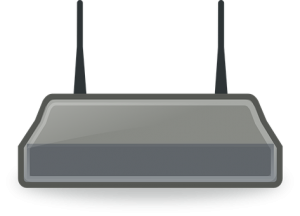Linksys Router Setup
Linksys is a well-known name in the world of networking hardware. The American company has been creating networking hardware products since 1988, becoming a staple for reliable routers, modems, and network switches in homes and businesses worldwide. We’ll offer a brief overview of Linksys, discussing its industry standing and reputation for providing robust and high-performing devices.
 Proper Linksys router setup is essential to ensure that you’re getting the best performance from your internet connection. A router functions as the hub of your home or business network, directing traffic and providing security. A poorly Linksys smart wifi setup can lead to issues such as slow connection speeds, inconsistent performance, or even security vulnerabilities. Therefore, we aim to guide users on how to complete the Linksys router setup process, ensuring optimal performance and security.
Proper Linksys router setup is essential to ensure that you’re getting the best performance from your internet connection. A router functions as the hub of your home or business network, directing traffic and providing security. A poorly Linksys smart wifi setup can lead to issues such as slow connection speeds, inconsistent performance, or even security vulnerabilities. Therefore, we aim to guide users on how to complete the Linksys router setup process, ensuring optimal performance and security.
Throughout this blog, we’ll walk you through the steps necessary to get your Linksys Wifi setup and running, guide you on how to log into your router for configuration, and offer troubleshooting tips for common issues you might encounter. This comprehensive guide seeks to make the process as smooth as possible, even for those with little to no technical background.
Linksys Smart WIFI Setup Process:
Linksys router involves several essential steps that can be easily followed to ensure a smooth and successful installation. Here’s a detailed guide to complete the Linksys smart Wifi setup process:
- Unboxing and hardware setup: First, carefully unbox your Linksys router and ensure that all the included accessories, such as power adapter and antennas (if applicable), are present. Next, connect the antennas to their designated ports on the router. Finally, plug in the power adapter to the router and connect it to a power outlet.
- Connecting the router to your modem: For completing the Linksys WIfi setup process, establish an internet connection, use an Ethernet cable to connect the router’s Internet (WAN) port to the modem’s Ethernet/LAN port. Make sure that the modem is turned on and connected to the internet service.

- Powering on the router and checking the lights: Power on the Linksys router by pressing the power button (if available) or simply plugging it in. Observe the lights on the front panel of the router to check the power, internet, and Wi-Fi status. The light indicators may vary depending on the router model.
- Accessing the router’s web-based setup page: Open a web browser on a computer or a mobile device connected to the router’s network (wired or wireless). In the address bar, enter the router’s default IP address (e.g., http://192.168.1.1) and press Enter. This will take you to the web-based Linksys setup page.
- Setting up the Internet connection: On the router’s web interface, select the appropriate connection type based on your Internet Service Provider (ISP). Common options include DHCP, PPPoE, and Static IP. If your ISP requires a username and password, enter the provided credentials.
- Configuring wireless settings: Within the router’s web interface, navigate to the wireless settings section. Choose a unique and memorable Network Name (SSID) for your Wi-Fi network. Enable WPA2 or WPA3 security to protect your wireless network from unauthorized access. Optionally, select the desired wireless channel for optimal performance and reduced interference.
- Guest network Linksys setup (if applicable): If your Linksys router supports guest networks, set up a separate guest network with its own password. This will allow visitors to connect to the internet without accessing your main network, enhancing security.
- Updating firmware and securing the router: Check for the latest firmware version on the Linksys website or through the router’s web interface. If a newer version is available, download and install it to ensure your router has the latest bug fixes and security enhancements. Additionally, change the default login credentials (username and password) to prevent unauthorized access to your router’s settings. Consider enabling additional security features, such as MAC address filtering and disabling remote access, to enhance your router’s security.
By following these step-by-step instructions, you can successfully complete the Linksys router, creating a stable and secure network environment for your home or office.
How to Login to Linksys Router:
 Accessing the Linksys router setup page requires login to Linksys router’s interface using a web browser. Login to Linksys router allows you to access and configure various settings to customize your network. Here’s a detailed explanation of how to login to Linksys router:
Accessing the Linksys router setup page requires login to Linksys router’s interface using a web browser. Login to Linksys router allows you to access and configure various settings to customize your network. Here’s a detailed explanation of how to login to Linksys router:
The default IP address of most Linksys routers is usually 192.168.1.1, but it may vary depending on the router model. You can find the default IP address in the router’s user manual or on the Linksys website. Alternatively, you can use the Command Prompt or Terminal (on Windows or macOS, respectively) to find the default gateway address of your connected device. This default gateway address usually matches the router’s IP address.
- Connect your device to the router: Ensure that your computer or mobile device is connected to the Linksys router’s network either via an Ethernet cable or through a wireless connection. For the best results, use a wired connection during the Linksys router login process.
- Opening a web browser and entering the IP address: Launch a web browser on your connected device and type the default IP address of the Linksys router into the address bar (e.g., http://192.168.1.1). Press Enter to proceed.
- Entering the default username and password: After entering the IP address, you will be directed to the Linksys router login page. The login credentials required at this stage are the default username and password for your specific Linksys router model. Commonly, the default username is set to “admin” and the password may also be “admin” or “password.” Refer to the user manual or the router’s label for the correct default credentials.
- Changing the default Linksys login credentials for security: Once logged in, it is highly recommended to change the default Linksys smart Wifi login credentials to enhance the security of your router. Go to the Administration or Management section of the router’s web interface, and then find the option to change the username and password. Create a strong, unique password that includes a combination of letters, numbers, and special characters.
- Troubleshooting Linksys smart Wifi login issues: In case you encounter Linksys wifi login problems, double-check the IP address you entered in the browser’s address bar. Ensure that your device is connected to the correct router’s network and try using a different web browser. If the issue persists, you can perform a factory reset on the router, which will reset all settings, including the Linksys login credentials, to the default values. After the reset, you can repeat the Linksys wifi login process using the default credentials.
 By following these steps, you will successfully login to Linksys router’s web-based setup page, giving you access to a wide range of configuration options to optimize your network settings and enhance security. Remember to keep your Linksys smart Wifi login credentials safe and updated to prevent unauthorized access to your router’s settings and maintain the privacy and security of your network.
By following these steps, you will successfully login to Linksys router’s web-based setup page, giving you access to a wide range of configuration options to optimize your network settings and enhance security. Remember to keep your Linksys smart Wifi login credentials safe and updated to prevent unauthorized access to your router’s settings and maintain the privacy and security of your network.
Conclusion:
Setting up and logging in to your Linksys router are essential steps in creating a stable and secure home or office network. A properly configured router ensures reliable internet connectivity and provides protection against potential security threats.
A well-configured Linksys router plays a pivotal role in establishing a stable and secure home or office network. By following the Linksys wifi setup process outlined in this blog, you can ensure seamless internet connectivity for all your devices, allowing you to stream, download, and browse without interruptions. Additionally, a properly Linksys setup optimizes network performance, minimizing the risk of connectivity issues and enhancing your overall online experience.
Throughout the Linksys wifi setup process, we covered crucial steps, such as hardware assembly, connection to the modem, and accessing the web-based Linksys router setup page. By entering the default IP address and Linksys login credentials, you gained access to a wide range of configuration options, including setting up the internet connection, configuring wireless settings, and creating a guest network for added security.
The proper Linksys Router setup and login process, your Linksys router will serve as a reliable and secure gateway to the internet. By implementing the tips provided, you can optimize your network’s performance, protect your data, and enjoy a seamless online experience for all connected devices. Remember that a well-maintained router is crucial for a smooth and secure network, so invest time in periodic checks and updates to ensure a hassle-free experience. Users can also navigate to the Linksys Support page to know more about Linksys router & resolve its related issues.
